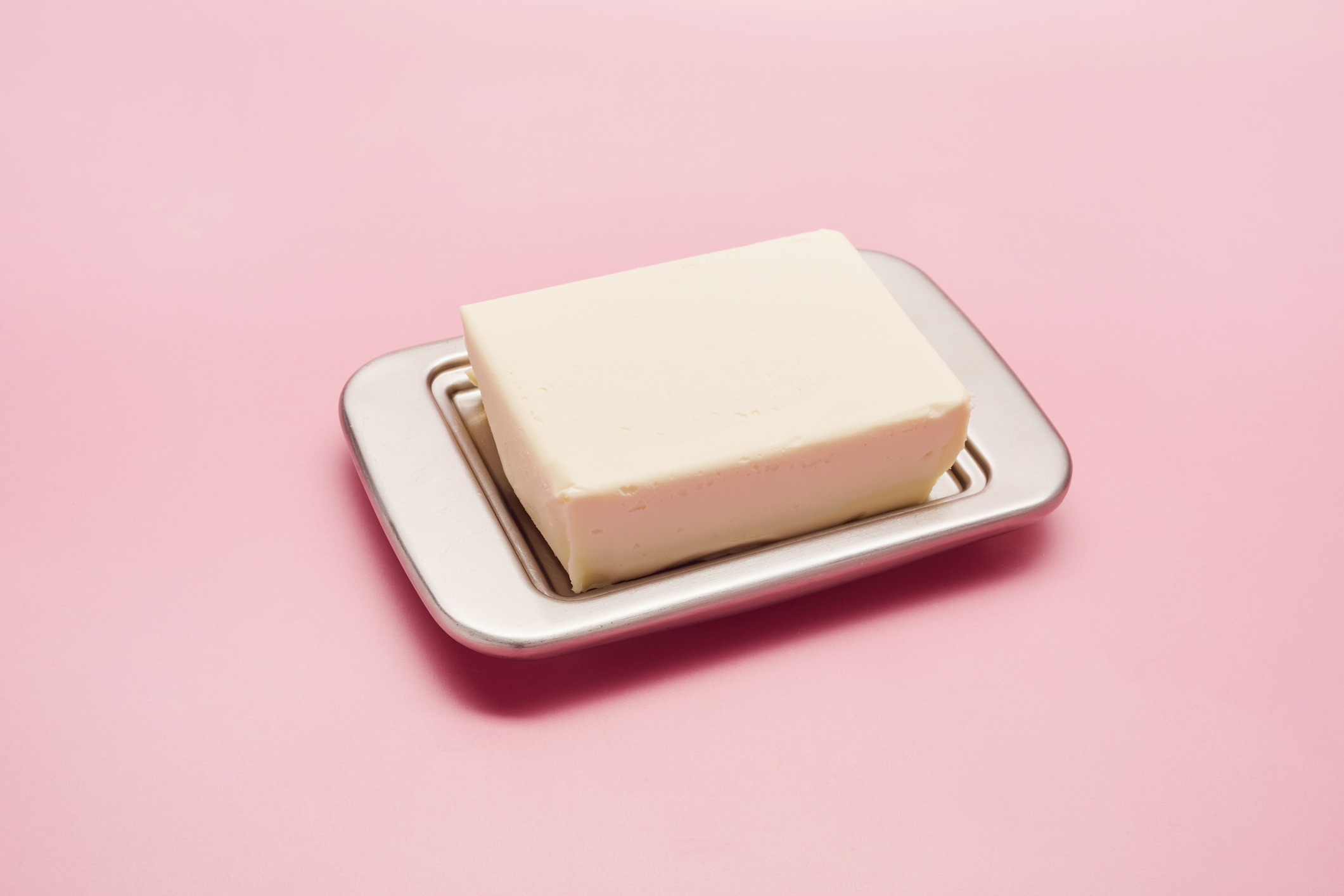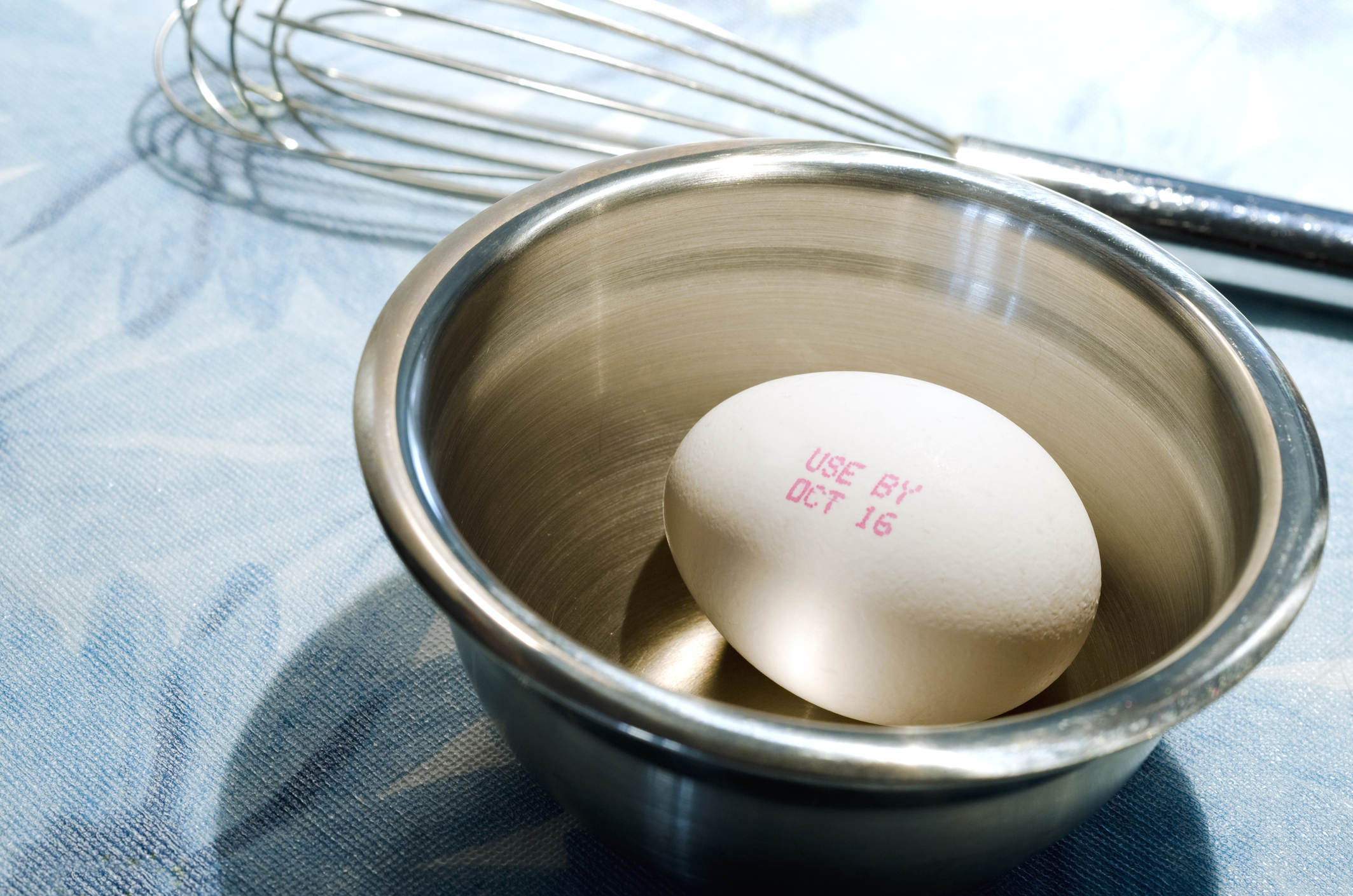Curious Questions: Margarine used to be pink — but why?
Margarine has been a staple of our breakfast tables for over a century, but it hasn't always had a smooth ride — particularly from the dairy industry, who managed to impose a most bizarre sanction on their easily-spreadable, industrially mass-produced rival. Martin Fone explains.


The recent storm in a china teacup over the constituents of a National Trust scone has once more brought into sharp focus the contentious question of food substitutes, none more so than the use of margarine instead of butter. Margarine might now be firmly established in the British diet with some 9.4 million Britons classified as heavy users of the spread in 2020, but it has been the source of controversy for over a century and a half.
It all began when the French Emperor, Louis Napoleon III organized a competition to find a cheaper alternative to butter. Attracted by the substantial financial award on offer, the chemist, Hippolyte Mège-Mouriès, was the first to come up with a solution, producing in 1869 a spread made from beef tallow. To make it more palatable, he flavoured it with a small amount of milk.
He called his spread oleomargarine, a word created from the Latin for beef fat, oleum, and the Greek for a pearl, margaron, probably a reference to the pearlescent lustre of the spread. The latter may also have been a nod to the direction of an earlier French chemist, Michel-Eugène Chevreul, who, in 1813, had isolated a substance from animal fat that formed pearly drops which he called margaric acid. Although the German chemist, Wilhelm Heintz, had proven in 1853 that there was no such acid, Mège-Mouriès may have simply assumed that, as his spread used animal fats, it was full of Chevreul’s phantom acid.
Armed with a patent, Mège-Mouriès began to produce his new spread in earnest, but it proved to be a commercial failure. He sold his patent in 1871 to a Dutch company, Jurgens, later becoming part of the Unilever group, one of the world’s largest producers of margarine, another example of an inventor who failed to profit from his ingenuity and died in relative poverty.
News of Mège-Mouriès’ discovery soon spread across Europe, Benedict Klein establishing the first German margarine factory in Cologne in 1871. The Sunday Post, in its edition of January 6, 1935, reported on the jubilee celebrations at Craigmillar Creamery, then Scotland’s largest margarine factory. In his speech the managing director, a Mr Mackenzie, revealed that the first commercial shipment of margarine arrived in Britain in 1874. ‘It was not long after this’, the paper noted, ‘that the first manufacture of margarine started at Craigmillar’.
"The American dairy industry’s smear campaign began to bear fruit with margarine initially declared a ‘harmful drug’ and its sale restricted"
The United States was also an early and enthusiastic adopter of oleomargarine with at least thirty-seven companies manufacturing it by the late-19th century. Mark Twain gives us a flavour of the margarine boom in Life on the Mississippi (1883), when he allegedly overheard a businessman’s remarks. ‘ Why, we are turning out oleomargarine now by the thousands of tons’, he wrote, ‘And we can sell it so dirt cheap that the country has got to take it – can’t get around it, you see’.
Although animal fats were the principal ingredients of oleomargarine, two significant breakthroughs were made. First, New Yorker, Henry Bradley, developed and patented a process in 1871 which enabled vegetable oils, principally cottonseed oil, to be combined with animal fats. Then, in 1905, James Boyce and Paul Sabatier invented the hydrogenation process, allowing normally liquid vegetable oils to be hardened, making it easier to turn them into a butter substitute without the need for animal fats.
Exquisite houses, the beauty of Nature, and how to get the most from your life, straight to your inbox.
In the early decades of the 20th century, margarine was usually made from a combination of animal fats and vegetable oils. However, with shortages in the supply of animal fats becoming increasingly more frequent, their rationing, along with butter, during the Second World War, and improved manufacturing techniques using vegetable oils, by 1945, original animal fat-based margarine had all but disappeared along with the now redundant prefix, oleo-.
The rather glib comment of Mark Twain’s businessman that ‘butter don’t stand any show – there ain’t any chance for competition’ was rather wide of the mark, seriously underestimating the ferocious reaction to the interloper from the dairy industry. After all, butter had been a staple of the human diet for over four millennia with nary a challenger.
Impassioned speeches were made in favour of ‘sweet and wholesome butter’ while its new competitor was characterized as the result of ‘the ingenuity of depraved human genius’. Cartoonists showed manufacturers dropping all manner of substances ranging from cats to rubber boots, even soap, paint, and arsenic, into the margarine mix while quasi-scientific reports were published suggesting that it was cancerous and its consumption possibly led to insanity.
The American dairy industry’s smear campaign began to bear fruit with margarine initially declared a ‘harmful drug’ and its sale restricted, and then the passing of the Margarine Act in 1886, the first of a series, which imposed restrictive tariffs and fees on producers. Some states even banned its sale, leading to the emergence of a profitable black market. It was not until 1950 that federal taxes on margarine were abolished.
"Sellers of non-pink margarine could face a fine of $100 or sixty days in prison"
A surprising but fiercely fought over battleground in the dispute between butter and margarine producers was the question of colour. Butter derives its familiar yellow colour from the antioxidant vitamin beta-carotene found in the grass grazed by cattle. Margarine, however, in its original manufactured state, has a whiteish colour, not unlike lard. In an effort to improve the appearance of their product and to emphasise that it was a butter substitute, manufacturers began to colour margarine yellow.
Butter producers claimed that this practice was a deliberate attempt to deceive consumers. By 1902 the Federal government had imposed a tax on coloured margarine of 10 cents per pound, forty times higher than that on white margarine, and 32 states had passed legislation imposing constraints on its sale. In response margarine manufacturers distributed margarine in its natural state together with a sachet of yellow dye which the consumer, in a process known as ‘butter stomping’, added and mixed into the margarine in the comfort of their own home.
In an age before food mixers, it was a time-consuming process with variable results, a task often delegated to children. There was even a special implement, a stomper, that could be bought but most households used a spatula, a wooden spoon, or, if mother was not looking, fingers. It was not until 1967 that the last state, Wisconsin, repealed its legislation around the colour of margarine, while restrictions persisted in Quebec until the early 2000s.
Vermont, New Hampshire, and South Dakota went even further by demanding that margarine be dyed pink. Sellers of non-pink margarine could face a fine of $100 or sixty days in prison. Margarine manufacturers fought back, the Supreme Court finding in their favour in 1898 by ruling that ‘pink is not the colour of oleomargarine in its natural state’ and that rendering it that colour ‘excites a prejudice and strengthens a repugnance up to the point of a positive and absolute refusal to purchase the article at any price’.
Nowadays most margarine is indistinguishable in colour from butter, but suspicions still linger that it is the poorer substitute. Foreshadowing the scone stushie, in 2017 Jan Polanik sued twenty-three Dunkin’ Donuts outlets in central and eastern Massachusetts for serving him ‘margarine or a butter substitute’ instead of butter with his bagels. The court found in his favour, although his greedy lawyer took an enormous bite out of his $95,000 damages.
The butter margarine debate is certain to rumble on for some time. At least, if you choose to spread margarine on your toast, it is not pink.

From goose and gratin to a very royal recipe, Country Life's top 10 recipes, food and drink stories of 2023
Our look back at 2023 makes us very, very hungry indeed.

Credit: Getty Images/iStockphoto
Curious Questions: Can you trust expiry dates on food?
Best before and use-by dates claim to show us when our food is likely to have gone off — but how

How cruising went from your grandparents' favourite holiday to an escape for explorers, foodies and music lovers
The idea of going on a cruise once conjured up images of old boys snoozing in armchairs while elderly guests
After graduating in Classics from Trinity College Cambridge and a 38 year career in the financial services sector in the City of London, Martin Fone started blogging and writing on a freelance basis as he slipped into retirement. He has developed a fearless passion for investigating the quirks and oddities of life and discovering the answers to questions most of us never even think to ask. A voracious reader, a keen but distinctly amateur gardener, and a gin enthusiast, Martin lives with his wife in Surrey. He has written five books, the latest of which is More Curious Questions.
